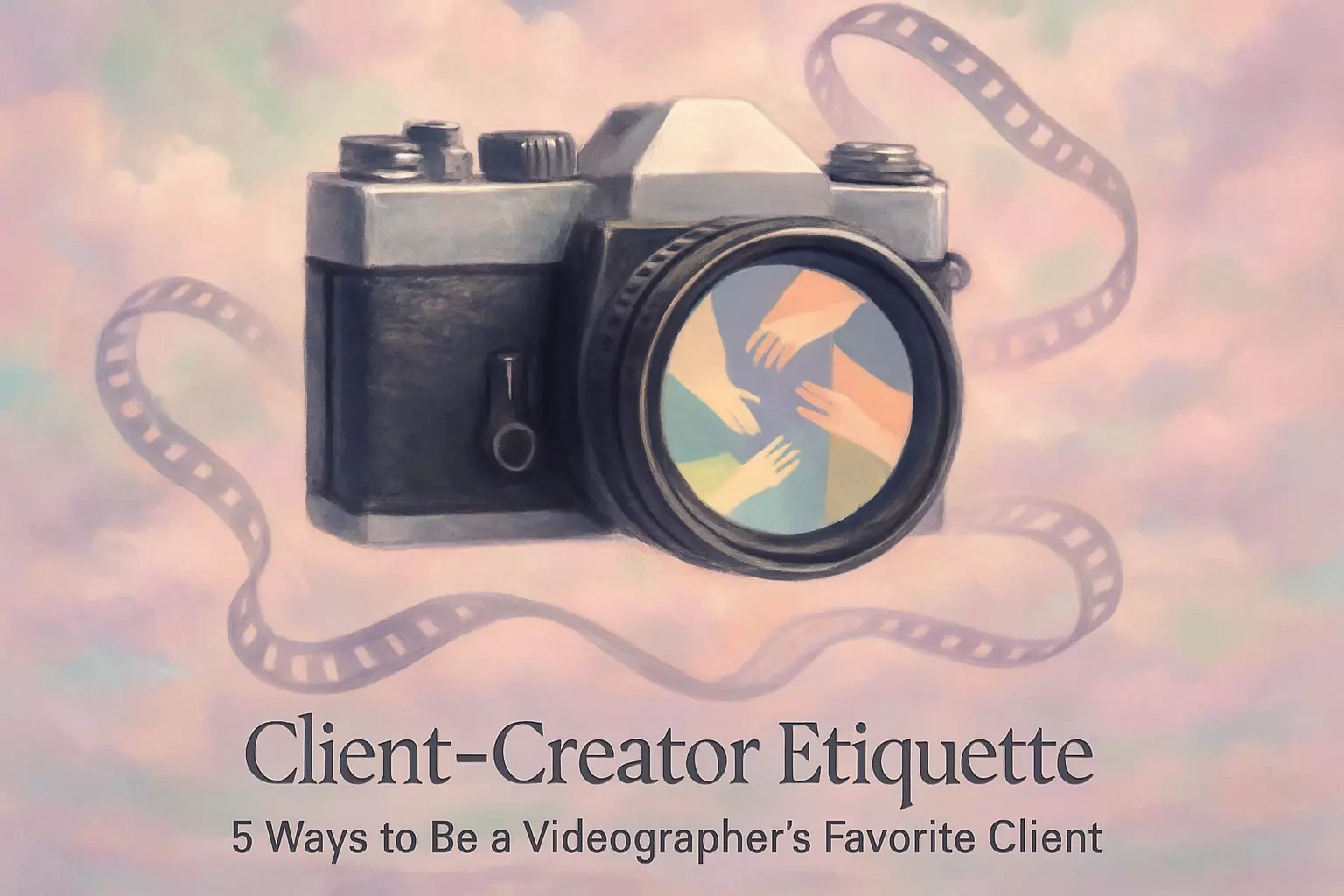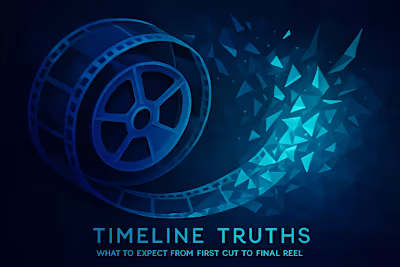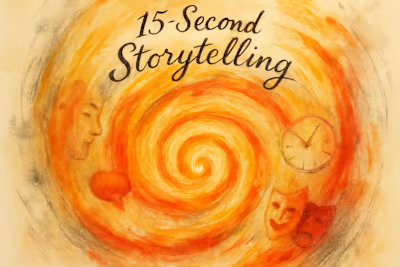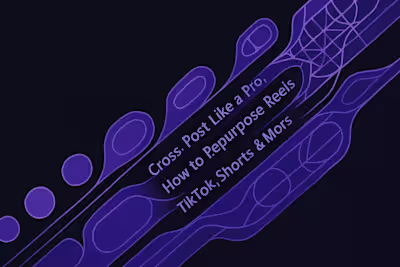Client–Creator Etiquette: 5 Ways to Be a Videographer’s Favorite Client

Client–Creator Etiquette: 5 Ways to Be a Videographer's Favorite Client
1. Communicate Clearly and Respectfully
Provide a Thorough Brief
Be Responsive and Available
2. Respect Their Time and Process
Avoid Unrealistic Deadlines
Honor the Agreed-Upon Revisions
3. Pay Promptly and Fairly
Adhere to Payment Terms
Don't Haggle After the Fact
4. Give Good Feedback
Be Specific and Goal-Oriented
Trust Their Expertise
5. Show Appreciation and Build a Relationship
Say Thank You
Provide Testimonials and Referrals
References
Client–Creator Etiquette: 5 Ways to Be a Videographer's Favorite Client
In the world of freelance creative work, the relationship between a client and a creator is everything. Being a great client doesn't just make the process more pleasant—it often leads to better, more inspired work. It means communicating clearly, respecting expertise, and fostering a true partnership.
This approach is the opposite of micromanagement, where a lack of trust can kill the creative magic. By following a few simple rules of etiquette, you can build a strong, lasting relationship with your videographer. The first step is to hire a top-tier Reels videographer who is ready to partner with you.
Think about it this way: when you treat your videographer as a valued partner rather than just a vendor, something shifts. They become invested in your success. They bring ideas you hadn't considered. They go the extra mile because they feel respected and appreciated.
The best client-creator relationships feel less like transactions and more like collaborations. You're working together toward a shared goal. And when both parties feel good about the process, the end result almost always exceeds expectations.
1. Communicate Clearly and Respectfully
Clear communication is the foundation of any successful project. This starts with a detailed brief and continues through the entire feedback process. Being respectful in your communication, even when giving critical feedback, fosters a positive and productive environment.
Good communication isn't just about being nice (though that helps). It's about being clear, consistent, and considerate. When you communicate well, you save time, reduce stress, and get better results.
Provide a Thorough Brief
As we've covered, a great brief is the best starting point. It shows you've invested time in clarifying your vision and respect the creator's need for clear direction. It sets the stage for a smooth collaboration.
A thorough brief doesn't mean a novel-length document. It means covering the essentials: your goals, target audience, key messages, style preferences, and any must-haves or deal-breakers. Include examples of work you admire. Share your brand guidelines if you have them.
The more specific you can be upfront, the less back-and-forth you'll need later. Your videographer can't read your mind. But with a solid brief, they won't have to. They'll understand your vision and can focus their creative energy on bringing it to life.
Be Responsive and Available
Freelancers often work on tight schedules. Responding to questions and feedback requests in a timely manner helps keep the project on track. Delays in communication can cause significant bottlenecks and frustration.
Set expectations early about your availability. If you're going to be out of office or have a busy week coming up, let your videographer know. They can plan around your schedule if they know about it in advance.
When they send you a draft or have a question, try to respond within 24-48 hours. Even if you need more time to review, a quick acknowledgment goes a long way. Something like "Got it! I'll have feedback to you by Thursday" keeps everyone on the same page.
Remember, your videographer might be juggling multiple projects. When you're slow to respond, it doesn't just delay your project—it can throw off their entire workflow.
2. Respect Their Time and Process
Understanding that creative work takes time and involves a specific process is crucial. Respecting the creator's schedule and workflow shows that you value their professionalism.
Every videographer has their own process. Some like to share rough cuts early. Others prefer to polish before showing anything. Some work best with regular check-ins. Others need space to create. Ask about their preferred workflow and adapt to it when possible.
Avoid Unrealistic Deadlines
While fast turnarounds are sometimes necessary, demanding instant results can compromise the quality of the work. Discuss and agree on a realistic timeline at the beginning of the project and stick to it.
Quality video work involves multiple stages: planning, shooting, editing, color grading, sound design, and revisions. Each stage takes time. Rushing any of them usually shows in the final product.
If you genuinely need something fast, be upfront about it. Many videographers can accommodate rush jobs—but they'll need to adjust their schedule and possibly their rates. What doesn't work is agreeing to a normal timeline, then suddenly needing everything yesterday.
Build in buffer time whenever possible. If you need the video for a launch on the 15th, don't tell your videographer the deadline is the 14th. Things happen. Files corrupt. Feedback takes longer than expected. A little breathing room prevents a lot of stress.
Honor the Agreed-Upon Revisions
Your initial agreement should specify the number of revision rounds included. Stick to this agreement and avoid asking for endless changes, which constitutes scope creep and is unfair to the creator.
Most videographers include one or two rounds of revisions in their base rate. This usually covers reasonable adjustments: trimming a scene, adjusting the music, tweaking the color grade. What it doesn't cover is completely changing direction or adding new elements that weren't in the original brief.
Consolidate your feedback for each round. Don't send notes in dribs and drabs over several days. Watch the full video, gather all your thoughts (and input from other stakeholders), then send comprehensive feedback all at once.
If you realize you need significant changes beyond the agreed scope, have an honest conversation. Most videographers are happy to accommodate additional work—for additional compensation. It's about fairness and mutual respect.
3. Pay Promptly and Fairly
This might seem obvious, but paying your invoices on time is one of the most important ways to show respect for your freelancer. For many independent creators, late payments can cause significant financial stress.
Think about your own paycheck. You count on it arriving when expected. You have bills to pay, groceries to buy, maybe a family to support. Freelancers are no different. The only distinction is they don't have an HR department to ensure timely payment.
Adhere to Payment Terms
Honor the payment schedule outlined in your contract. If you have a set net-30 or net-60 payment cycle, be upfront about this from the start so the freelancer can plan accordingly.
Many videographers require a deposit before starting work, with the balance due on delivery. Others invoice at project milestones. Whatever terms you agree to, stick to them. Set calendar reminders if needed.
If your company has a lengthy approval process for invoices, let your videographer know upfront. They might adjust their rates or payment terms accordingly. Transparency prevents frustration on both sides.
When you receive an invoice, acknowledge it. Even if payment will take a few weeks, a simple "Invoice received, payment processing" provides peace of mind. Silence often feels like avoidance, even when that's not the intent.
Don't Haggle After the Fact
The time to negotiate rates is before the project begins. Once a price is agreed upon, honor it. Consistently delivering great work is how freelancers build a sustainable business.
Imagine if your employer decided to pay you less after you'd already done the work. "Actually, we think this project was only worth 75% of what we agreed." You'd be furious, right? It's no different for freelancers.
If the final deliverable meets the agreed specifications, pay the agreed amount. Period. If you're unhappy with the work, address it through feedback and revisions, not by withholding payment.
Building a reputation as a client who pays fairly and on time will attract better talent. Word spreads in creative communities. Be the client freelancers recommend to their peers, not the one they warn against.
4. Give Good Feedback
As covered in our feedback loop article, the way you give notes matters. Good feedback is specific, constructive, and consolidated. It helps the creator improve the work without feeling demoralized.
Giving feedback is an art. Done well, it guides the project toward your vision while maintaining the creator's enthusiasm. Done poorly, it can deflate motivation and strain the relationship.
Be Specific and Goal-Oriented
Tie your feedback back to the project's goals. Explain why you're requesting a change and how it helps achieve the objective. This turns subjective opinions into actionable, strategic notes.
Instead of "I don't like this shot," try "This shot feels too static for the energetic vibe we're going for. Could we use a more dynamic angle or add some movement?" The second version gives your videographer clear direction.
Avoid vague feedback like "make it pop more" or "it needs more pizzazz." These mean different things to different people. Be specific about what you want to see. Reference timestamps. Point to examples that capture what you're after.
Remember the project goals you outlined in your brief. Frame feedback around those objectives. "Our goal is to appeal to young professionals. This music feels too corporate. Can we try something more contemporary?" This approach keeps everyone focused on what matters.
Trust Their Expertise
If a creator pushes back on a suggestion, listen to their reasoning. They are the expert in their field, and their advice is valuable. A collaborative discussion often leads to a better solution.
Your videographer has likely created hundreds of videos. They understand pacing, visual flow, and what resonates with audiences. When they suggest an alternative to your idea, it's not defiance—it's expertise in action.
Create space for dialogue. "I was thinking we should speed up this section, but I'd love your thoughts" invites collaboration. You might learn that speeding it up would clash with the music or make the text unreadable.
Sometimes the best approach is to try it both ways. Many videographers are happy to create two versions so you can see the difference. This takes the guesswork out of creative decisions and often leads to surprising discoveries.
5. Show Appreciation and Build a Relationship
A little appreciation goes a long way. Building a positive, long-term relationship can turn a one-off project into a fruitful partnership. Happy freelancers are motivated to do their best work for you.
The freelance world can be isolating. Creators often work alone, pouring their hearts into projects without much human interaction. Your appreciation can be the bright spot in their week.
Say Thank You
A simple thank you for their hard work can make a big difference. If you're thrilled with the final Reel, let them know. Positive reinforcement is a powerful motivator.
Be specific with your praise, just like with your feedback. "The transition at 0:23 is perfect—exactly the energy we wanted" means more than a generic "great job." It shows you really watched and appreciated their work.
Share the success. If the video performs well, circle back and let them know. "Our Reel got 50K views in the first week!" or "The CEO loved it and wants to do more" makes their day and strengthens your relationship.
Consider small gestures that show appreciation. A coffee shop gift card with a thank-you note. A LinkedIn recommendation. Tagging them when you share the video. These little things build goodwill and loyalty.
Provide Testimonials and Referrals
If you had a great experience, offer to write a testimonial or refer them to others in your network. This is one of the most valuable things you can do for a freelancer and a sure way to become a favorite client.
Testimonials are gold for freelancers. They provide social proof that helps win new clients. Take ten minutes to write a thoughtful review highlighting what made the experience great. Be specific about results if you can share them.
Referrals are even more valuable. When you connect your videographer with others who need their services, you're directly contributing to their business growth. They'll remember this and prioritize your projects in the future.
Don't wait to be asked. Proactive testimonials and referrals show you genuinely value the relationship. They transform you from just another client into a true advocate and partner.
Being a great client isn't complicated. It comes down to treating your videographer the way you'd want to be treated. Communicate clearly. Respect their time and expertise. Pay fairly and promptly. Give thoughtful feedback. Show appreciation.
These simple practices create a positive cycle. When videographers enjoy working with you, they bring their best ideas and effort. They prioritize your projects. They become invested in your success. The work gets better, the process gets smoother, and everyone wins.
Start implementing these practices on your next project. You'll be amazed at how much better the experience becomes—for everyone involved.
References
Like this project
Posted Jun 30, 2025
Want to build a great, long-lasting relationship with your Reels videographer? Follow these 5 simple etiquette rules to become the client every creator loves to work with.








